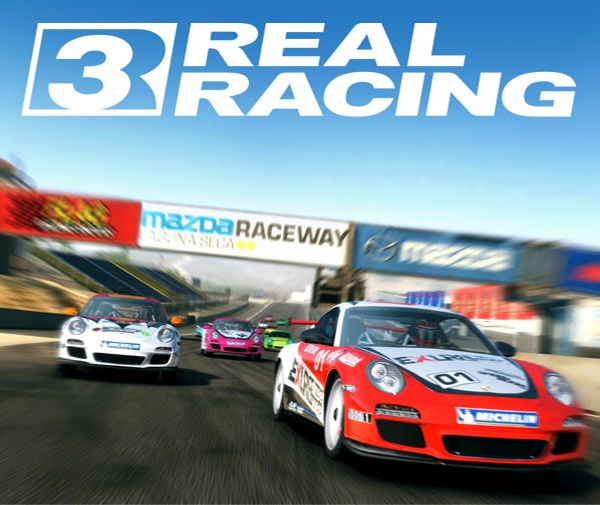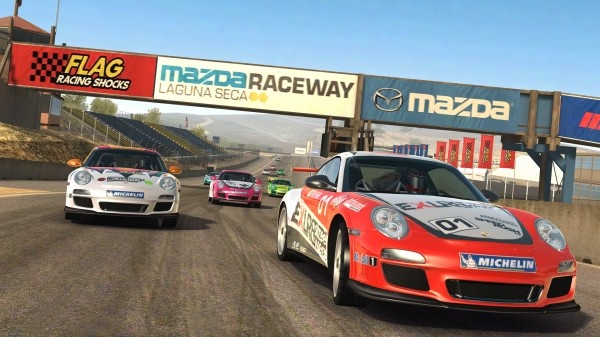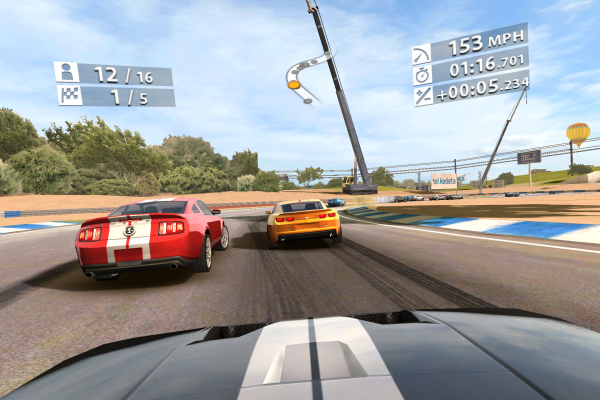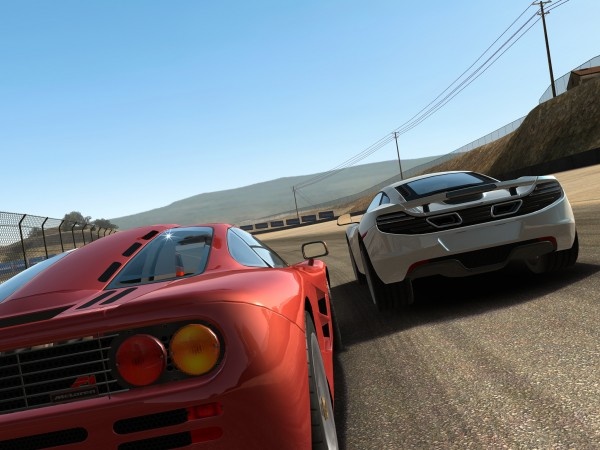Real Racing 3 - Time Shifted Multiplayer
Earlier we took a look at the history of Real Racing as well as that of Firemint itself, then it was on to the nitty gritty details of the Real Racing series' gameplay design issues. Now it’s time to talk about what could be one of Real Racing 3’s most revolutionary features: Time Shifted Multiplayer.
Of Two Minds

Most iOS gamers are familiar with the idea of asynchronous multiplayer at this point; one person takes a turn and submits it, then next person takes their turn whenever they’re able, and so on. Many iOS multiplayer games use this mechanic to great effect these days; Robot Entertainment’s stellar Hero Academy, OMGPOP’s Draw Something, and Playdek’s Penny Arcade The Game: Gamers vs. Evil are just a few examples.
It’s great for playing anything turn-based on the go because it enables players to jump in and make their move whenever it’s convenient for them. Taking a break to get lunch, turning off the phone for a few hours during a long trip, or even taking a break partway through a match are all possible thanks to this particular form of multiplayer.
Real-time multiplayer games are a bit more difficult to execute on iOS devices. Not so much because the technology isn’t there, but because the very nature of mobile platforms creates a different sort of “flow” for users who aren’t tied down to a particular location. And Game Center is still in its relative infancy, so setting up a match among friends typically requires a decent amount of prep work. Especially given the sheer number of titles available for most Apple products these days. Capcom’s Street Fighter IV Volt and Marvel Vs. Capcom 2 are both examples of this particular multiplayer type, and both fun games, but setting up a match takes more work than it does on many gaming platforms.
The fast paced nature of the gameplay and the speed with which most bouts are completed fit the real-time online play well, but it still requires players to find a good spot to stop for a moment if they want to get a match or two in. Or they could also always play to their heart’s content while relaxing at home or any other location with proper seating and wireless internet.
Real Racing 3’s Time Shifted Multiplayer is a sort of amalgamation of both asynchronous and simultaneous play, and could very well lead to some significant changes in how we play mobile games with other people in the near future.
Thinking Freely

“What could we do if we had no limitations?” is the mantra that was used throughout Real Racing 3’s development according to the game’s Development Director, Kynan Woodman. “The answer to that question for many of us," he said, "is that we would be able to play against our friends and other real people anytime and anywhere.” It might not seem like a big deal but not everyone has the same daily schedule.
Anyone who’s ever tried to play games online with a friends who lives in another state, even one that’s in the same time zone, knows just how problematic it can be at times to try and coordinate. Being able to play with friends without needing to adhere to a specific schedule means everyone can play when they have a moment rather than having to set aside a specific time or possibly turn down an open invitation.
And thus Time Shifted Multiplayer was conceptualized. Without worrying about whether it was “possible” or not, they got to work figuring out a way to combine the accessibility of asynchronous play with the pulse-pounding action of simultaneous play. In essence, it’s meant to be the best of both worlds.
Blazing a Trail

Firemonkeys hasn’t revealed the exact details of Time Shifted Multiplayer just yet, but it has explained the basics of how everything comes together in practice. When a Real Racing 3 player begins a race against someone else it’s not actually a direct competition.
Rather than racing against their opponent directly they’re in fact racing against “... their fully interactive time-shifted double," Woodman said, "which emulates their performance and skill.” In other words it’s like racing against their ghost, only this particular ghost is tangible. This “non-ghost” can be driven off the track, react to other racers jostling for position, and all the other stuff a real player would do automatically.
Imagine racing against a snapshot of another person; a sort of virtual player that’s compiled from data based around their particular skill level and performance. If left to its own devices it’ll achieve a time similar (if not equivalent to) the player’s original run, but that’s only if it’s left alone. This is, in essence, what Time Shifted Multiplayer is.
It’s never a good idea to get too far ahead of things when it comes to speculation, but it’s also incredibly difficult not to get swept up in all the Time Shifted Multiplayer madness. It’s a technology that combines the two primary forms of online play iOS users have come to rely on for all of their games, and as such stands to create quite a stir once more and more titles begin to adapt similar techniques. Fusing the play anywhere/anytime convenience typical of most mobile multiplayer games with the more directly interactive (and often more competitive) nature of real time multiplayer certainly seems like a brilliant idea on paper.
Firemint (and now Firemonkeys) has been on an interesting road trip up to now; full of all kinds of unexpected detours, the occasional paint job, maybe a trade-in here and there, picking up a few new passengers along the way, and bittersweet goodbyes to those who've been dropped off. Of course it's not over yet. There's still a lot of road to travel. We’ll have to wait until next month to see how well everything Firemonkeys has experienced and created comes together for the newest pit stop, but the potential is definitely there.





